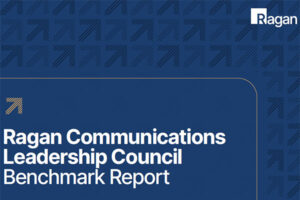Philip Morris’ internal comms leader, Bessie Kokalis-Pescio, on measuring success, reaching dispersed workers and bridging cultural divides
The experienced communicator shares a wealth of tips to keep your messaging globally resonant, relevant and clear as a bell.

Perhaps no industry is undergoing more disruption and radical change right now than Big Tobacco.
Philip Morris International is certainly no exception. The company, originally founded during the James Polk presidency (1847), is in the midst of a dramatic transformation aimed at delivering “a smoke-free future by focusing its resources on developing, scientifically substantiating and responsibly commercializing smoke-free products that are less harmful than smoking, with the aim of completely replacing cigarettes as soon as possible.”
As you might imagine, this major business shift requires a comprehensive communication strategy that addresses the concerns of multitudes of stakeholders. And that’s just what Bessie Kokalis-Pescio, PMI’s global head of internal communications, is delivering. Here, she shares about her approach toward reaching more than 70,000 employees based around the globe—and how she views the role of comms moving into an uncertain future.
Ragan: What are your top tips for effectively reaching a dispersed, diverse workforce?
Kokalis-Pescio: As the global pandemic continues, communicators around the world strive to offer their employees as many virtual life rafts as possible. We have to rely on our existing digital channels to maintain a consistent, continuous flow of information throughout the organization and support the business as usual.
But these are unprecedented times, so we also need to meet employees where they are and connect with them the way they prefer, utilizing new and often informal tools or channels to foster belonging and a sense of community—well beyond business as usual.

Bessie Kokalis-Pescio
Ragan: Which communication tools, tech and platforms are you prioritizing right now?
Kokalis-Pescio: This year, PMI prioritized the development and launch of our new, global intranet. Amidst our bold business transformation to deliver a smoke-free future—which coincided with the global pandemic that increased the reliance on digital communications literally overnight—we knew we had to strengthen employee engagement and company culture, and for this we needed a more seamless, personalized, collaborative, and inclusive intranet, which has since quickly become our colleagues’ preferred source of information around the world.
At the beginning of the pandemic, we also prioritized the rollout of Yammer—using it to build communities, share knowledge, as well as foster employee engagement, networking, and collaboration. Through Yammer, we launched a series of e-challenges to support employees in navigating their new remote working reality and spark an ongoing dialogue. Yammer also became our continuous feedback loop; we regularly mine employee comments to confirm what resonates with our colleagues globally and what other requests or ideas they might have—and plan our future programs accordingly.
Ragan: Which metrics do you look at to gauge communication success?
Kokalis-Pescio: We look at eNPS (employee net promoter score) to quantitatively measure employee engagement.
Our communications are focused on addressing three areas of opportunity—relevancy, clarity, and confidence—and we continually measure our effectiveness around these. Despite the pandemic—or perhaps because of our enhanced efforts to combat it—we made a significant, measurable impact on our eNPS scores year over year, boosting employee understanding, confidence, and support of our transformational journey.
We are equally committed to measuring our success qualitatively. We pay close attention to employee feedback to better understand how our messages, events and programs are received, what questions and topics are top of mind, and what new tools or trends may be worth exploring.
The key is to be timely and attentive, follow up in meaningful ways, and promote a continuous feedback culture, making it a win-win—we gather great data while strengthening employee engagement.
Ragan: How can communicators act as a bridge between cultures? And what are some practical ways to bring people together right now, especially in a remote or hybrid environment?
Kokalis-Pescio: With 70,000-plus employees from 130-plus nationalities—not to mention all the different languages and time zones—we can certainly relate to the challenge of bridging cultures and finding programming with universal resonance.
During these unprecedented times, when everyone is longing for inclusion, engagement, and a sense of community in and outside of work, we as communicators can draw inspiration from much of the digital world around us.
For instance, we all know and follow amazingly simple and powerful examples across social media, from cooking communities, through wellness content and blogs, to shared interest groups. At PMI, we found that our employees are quite passionate about music and food, so we created programs that harness these universal passions. Our three experiential programs—PMI Music Experience, Open Stage, and Your Story on a Plate—had an incredible and measurable impact on bridging cultures and communities worldwide, making employees feel connected, inspired, energized, proud, and appreciative.
Ragan: What mistakes should communicators avoid when trying to reach a broad audience of employees?
Kokalis-Pescio: Let me talk about doing the right things, instead of the mistakes to avoid.
First, you must know your organization’s strengths, recognize your audience’s needs, and have a well-established communications platform and dedicated leaders. In order to reach a broad audience effectively, you need a clear strategy, with frequent and consistent messaging, and reliable metrics. You also need fun and engaging content that goes beyond business as usual, especially in our current environment.
And finally, you must have a continuous feedback loop in place, to ensure you are effectively reaching your audience, sparking a conversation, making connections, and having the desired overall impact.
Ragan: What skills should comms pros be strengthening heading into 2022 and beyond?
Kokalis-Pescio: Relationship-building, strategic thinking, and listening are three crucial skills that everyone in the business world needs to strengthen, regardless of your role or level in any organization. After all, none of us work in isolation—we work side by side with our teammates, we collaborate with colleagues in our area, and we serve on cross-functional teams every day.
Being a good team member, leader, and partner require that we listen, learn, and keep an open mind, we think beyond our own perspectives, we treat others with respect and engage constructively, so we are using our collective knowledge to find the best solutions for the internal or external customers we serve.







